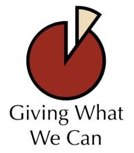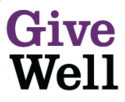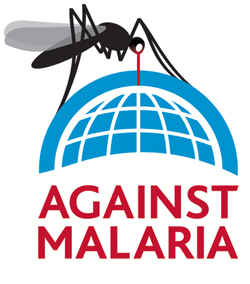 Since my first internship in college, I have made an annual donation of $5,000 or 10% of my post tax income, whichever is greater, to a charity called the Smile Train. The Smile Train performs corrective surgery on children born with cleft lips and cleft palates in developing countries. The surgery costs about $250 per person, and it makes a huge difference in the life of the people born with clefts. Uncorrected clefts result in lifelong problems eating, speaking, and breathing. Smile Train had some drama this year when they announced (and later reverted) plans to merge with another cleft charity. I don’t know if this impacted Smile Train’s effectiveness, but the shakeup motivated me to re-evaluate my choice of charity, something I had been planning to do for a while.
Since my first internship in college, I have made an annual donation of $5,000 or 10% of my post tax income, whichever is greater, to a charity called the Smile Train. The Smile Train performs corrective surgery on children born with cleft lips and cleft palates in developing countries. The surgery costs about $250 per person, and it makes a huge difference in the life of the people born with clefts. Uncorrected clefts result in lifelong problems eating, speaking, and breathing. Smile Train had some drama this year when they announced (and later reverted) plans to merge with another cleft charity. I don’t know if this impacted Smile Train’s effectiveness, but the shakeup motivated me to re-evaluate my choice of charity, something I had been planning to do for a while.
I wanted to base my decision on charity metrics. Using my fixed charitable budget, I want to get the highest possible return in terms of lives saved or drastically improved. I don’t give weight to the gender, ethnicity, or location of the recipients. I’m also not interested in spreading it around. I want to pick the best charity and give 100% of my donation to it. For an explanation of the rationale behind donating to a single charity, read this article by the economist Stephen Landsburg.
One metric that I knew not to use, or at least not exclusively, is ‘efficiency’. This is the percentage of budget that goes to program expenses, and it’s used by a number of charity rankings like Forbes’ annual charity list. While the efficiency ratio is useful for ruling out charities where much of the budget goes into management’s pockets, it does not account for the big differences in return-on-donation between different charities.Like any self respecting nerd, I tried to come up with a formula and make a spreadsheet. I wanted to compare charities on an apples to apples basis in order to figure out where my dollars would have the biggest impact. My initial attempt was based on the following variables:
- U = cost per unit (For the Smile Train, this is a surgery on one person)
- L = number of required lifetime units (An operation might be done once, medication may be require many doses over a lifetime)
- E = efficiency (Percentage of the budget goes to the actual cause as opposed to overhead)
- S = Odds of improving and/or dramatically improving a life (Vaccines are given to some people that would not have caught the disease anyway)
Cost per person helped = S * U * L / E
For the Smile Train, This worked out to be 1 * $250 * 1 / .822 = $304.
I ran into two problems with this formula. First, I could not find a scalable way to get inputs for large numbers of charities. The second issue is that a crucial variable was missing from my formula. What’s the difference in impact between preventing blindness versus increasing school attendance versus fixing a cleft palate? My formula treated all afflictions as equally detrimental. While that didn’t seem right to me, I wasn’t sure how to capture the differences.
While I was researching the inputs to my formula, I found two fantastic resources for optimizing charitable giving, both of whom had done much of the leg work already.
 Giving What We Can (GWWC) was started by a philosophy professor at the University of Oxford named Toby Ord . GWWC makes charitable recommendations by trying to optimize a metric called disability adjusted life years, or DALY. This is a much better version of what I was trying to get at with my spreadsheet. DALY is an increasingly popular metric to compare the burdens of disease and various treatments. It’s used by the World Health Organization, World Bank, and others. GWWC also provides a wealth calculator to give you a sense of where you stand in terms of wealth compared to most of the rest of the world. If you’re reading this, I bet you are richer than you think.
Giving What We Can (GWWC) was started by a philosophy professor at the University of Oxford named Toby Ord . GWWC makes charitable recommendations by trying to optimize a metric called disability adjusted life years, or DALY. This is a much better version of what I was trying to get at with my spreadsheet. DALY is an increasingly popular metric to compare the burdens of disease and various treatments. It’s used by the World Health Organization, World Bank, and others. GWWC also provides a wealth calculator to give you a sense of where you stand in terms of wealth compared to most of the rest of the world. If you’re reading this, I bet you are richer than you think.
GWWC has determined the best charitable bangs for your buck are from curable and preventable diseases in the third world. Their three recommended charities are:
 The other resource I found is GiveWell.org. GiveWell was started by two former financial analysts named Holden Karnofsky and Elie Hassenfeld. GiveWell also uses DALY, but takes a somewhat more nuanced view to the charity optimization problem.
The other resource I found is GiveWell.org. GiveWell was started by two former financial analysts named Holden Karnofsky and Elie Hassenfeld. GiveWell also uses DALY, but takes a somewhat more nuanced view to the charity optimization problem.
GiveWell uses DALY to filter down to the set of best philanthropic investments, but considers the error bars on DALY estimates to be too high to make a precise ordering. Once the universe of potential charities has been winnowed down to the highest-return organizations, GiveWell does proprietary research in an attempt to forecast changes in the effectiveness of incremental donations. They interview management teams and find out about the projects they will fund if their budget increases. GiveWell reevaluates its top charities each year, requests updated information and interviews from the respective organizations, and updates its recommended charities list.
While there are differences in the methodologies of these two organizations, they come to similar conclusions. GiveWell’s two recommended charities both show up in GWWC’s list. In fact, GWWC recently updated their site based on research that GiveWell conducted. GiveWell’s top two recommendations are:
- Against Malaria Foundation
- Shistosomiasis Control Initiative

